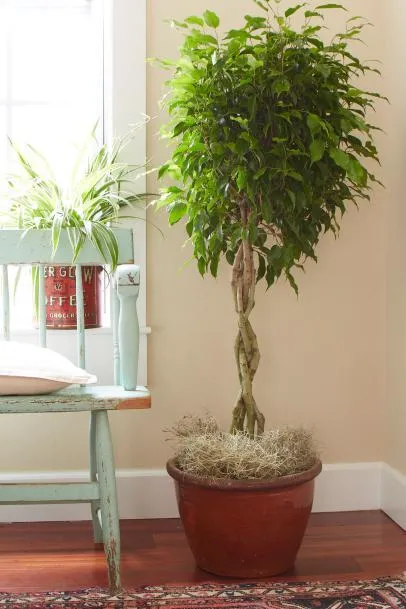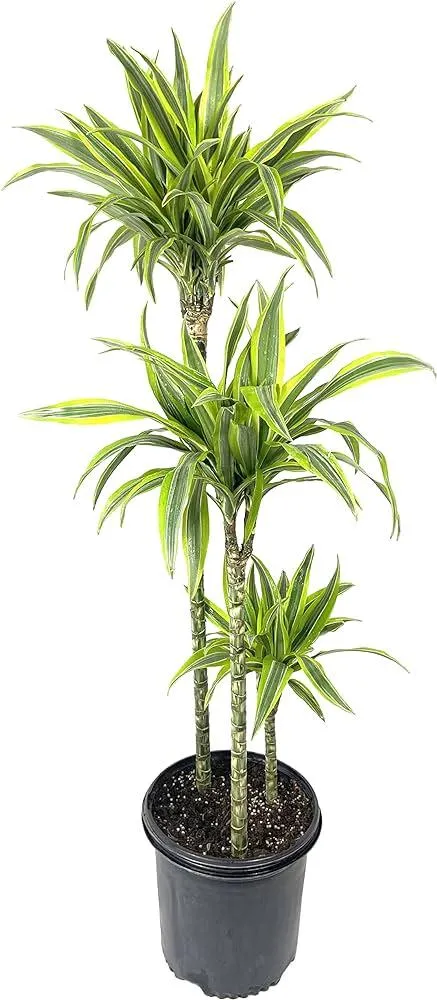The Best Indoor Tree Plants to Brighten Up Your Home
When searching for “tree plants indoor,” you’re likely looking to add some greenery and natural ambiance to the interior of your home. Indoor trees can be a beautiful way to achieve that goal while also providing some nice perks like improved air quality. In this article, I’ll cover:
- Popular indoor tree plant varieties and their care requirements
- Tips for picking the right tree for your indoor space
- Creating the ideal environment for indoor trees to thrive
Top Indoor Tree Plant Options
Here are some of the best indoor tree plants to consider:
Money Tree (Pachira aquatica)
Money trees are one of the most popular indoor trees due to their low maintenance needs and appealing braided trunks. From my experience, they’re fairly hardy as long as they receive moderate sunlight and aren’t overwatered. Money trees clean indoor air well and have symbolic meanings of prosperity and good fortune in Chinese culture that some folks find appealing. They grow well in offices, living rooms, and other high-traffic areas.
Dwarf Date Palm (Phoenix roebelenii)
With their fan-like fronds and slow growth, dwarf date palms make lovely compact indoor trees. I’ve found they thrive in medium to low light and don’t demand too much care. These palms add a tropical vibe to any room. Just be aware they are prone to spider mite infestations, so vigilance is key to prevent issues. Overall, they’re low fuss and will last for years with basic care.
Weeping Fig (Ficus benjamina)
Weeping figs are known for their full, drooping branches and tolerance of low-light conditions indoors. In my experience, they do well in living rooms and office areas that receive only indirect sunlight throughout the day. These trees cleanse indoor air very efficiently and take neglect or infrequent watering quite well. Their lush foliage creates a relaxing, jungle-like atmosphere. However, they can be vulnerable to mites and require occasional periods of very dry soil.

Dracaena (Dracaena marginata, Dracaena fragrans)
Dracaena species add elegance to any space with their upright forms and colorful striped or solid leaves. From my experience over the years, they tolerate low light well and thrive on infrequent watering. These trees hold up well to benign neglect and are quite durable as indoor plants. Popular varieties worth considering are Dracaena marginata aka Madagascar dragon tree and Dracaena fragrans aka corn plant or mass cane. Both remove indoor pollutants effectively.
Those are some of the top tree options, but there are other great varieties too like Norfolk Island pine, bamboo palm, and Chinese evergreen that work well as indoor trees given the proper care. The key is choosing a plant suited to your space and lifestyle.
Considerations for Picking the Right Indoor Tree
When selecting an indoor tree, here are some important factors to keep in mind:
- Light conditions: Evaluate how much light the area receives and match it to a tree’s light needs. Low-light trees like figs and dracaena are safer bets for most homes.
- Size constraints: Think about a tree’s mature dimensions and make sure it will fit the available space long-term without being overcrowded or bumping ceilings.
- Care level: Choose trees with care requirements you’re able to reasonably fulfill, like weekly watering or pruning. High-maintenance plants may be challenging indoors.
- Décor preferences: Consider leaf shape/form, texture, and colors needed to complement your home’s style.
- Environmental conditions: Factor in air temperature/humidity levels in the space and match them to a tree’s preferences.
Proper plant selection based on these points will give your indoor tree the best chance for a long, healthy life inside your home. Be realistic about what you’re willing to care for too.
Tips for Thriving Indoor Tree Care
Once you’ve chosen the right tree, following some basic care principles will help it grow strong:

- Water regularly based on conditions: Allow topsoil to dry slightly between waterings and check moisture levels below surface too. Overwatering is risky, while underwatering stresses trees.
- Provide adequate lighting: Use a grow lamp for low-light spots and slowly adjust trees to brighter areas. Insufficient light leads to sickly growth.
- Fertilize weakly every few months: Dilute fertilizer and apply during active growth periods. Too much fertilizer can burn roots.
- Ensure proper temperatures: Most indoor trees want temperatures between 60-80°F. Use a thermometer for monitoring.
- Repot only when needed: Overpotting encourages excessive root loss from disturbance. Transfer to larger pots as roots fill the current container.
- Check regularly for pests: Common indoor tree issues include mites, mealybugs, and scale. Address these promptly with treatments before a major infestation sets in.
- Enjoy your tree! Admire its greenery regularly. With some TLC, indoor trees can brighten your home for years to come.
By selecting an appropriate tree species for your space and keeping up with routine maintenance, you’ll give your indoor tree plant the best chances for a long, happy life inside your home. Ask me if you need any clarification or have additional questions on growing trees indoors.
I hope this covers what you were looking to know about tree plants suitable for indoor growing! Let me know if any part of the care requirements seem kind of rough or if you’re looking for something lower maintenance. There’s definitely options out there for various levels of plant parenting skills. Otherwise, happy planting and enjoy the addition of natural décor to your interior space.
Top Indoor Tree Plants
| Plant | Light Needs | Water Needs | Size | Care Level |
|---|---|---|---|---|
| Money Tree | Low to Medium | Allow soil to dry out between waterings | 2-6 feet tall | Easy |
| Spider Plant | Medium to Bright | Water when top inch of soil is dry | 1-3 feet tall and wide | Easy |
| Chinese Evergreen | Medium to Bright Indirect | Keep soil slightly moist | 2-6 feet tall and wide | Easy |
| Dieffenbachia | Medium Indirect | Keep soil moist but not soaked | 2-5 feet tall | Easy |
| Snake Plant | Low Light | Let soil dry between waterings | 1-4 feet tall | Very Easy |
FAQ
-
What kinds of tree plants can I grow indoors?
Some popular choices for indoor tree plants include ficuses, palms, dracaenas, and hardy succulents like jade and snake plants. These species have adapted to tolerate lower light conditions inside homes.
-
How much light do indoor tree plants need?
Most indoor tree plants thrive in locations with bright, indirect sunlight for several hours each day. However, some varieties can kind of survive in areas with less light. It’s important to check the light requirements for each species.
-
How often should I water indoor trees?
The frequency of watering depends on the plant and growing conditions. As a starting point, check the soil every week. If the top inch is dry, it’s time to water. In warmer months with HVAC systems, trees may need water every 5 days. Overwatering indoors is worse than underwatering.

-
How big will my indoor tree grow?
Final size depends on the species, but most trees for indoors max out between 3 to 10 feet tall. Dwarf varieties stay quite tiny, while others require frequent pruning to limit their dimensions. Always check mature dimensions listed for the plant.
-
“Do indoor trees need fertilizer?”
Fertilizing is usually unnecessary for indoor trees. However, during the growing season from spring to fall, a dilute water-soluble fertilizer every few months can sort of give trees a boost. With such a minimal requirement for nutrients indoors, they likely won’t show noticeable improvements. Perhaps fertilizer is a waste?
-
What pests affect indoor trees?
The biggest issues are spider mites, scale, and mealybugs. Look for tiny yellow stippling on leaves or fluffy white dots to spot pests early before they become established. Neem oil or insecticidal soap treatments often do the trick. Prevent with good hygiene like regularly cleaning the plant and pot thoroughly.
-
How can I make my indoor tree look fuller?
For a bushier appearance, trees can be pruned to encourage branching lower down. You can also try staking branches to train multiple trunks. Over time, air layering pieces may create a landscaped look. Another option is placing trees in pairs or groups rather than solitarily. A little landscaping can have a big reward!
So in summary, trees can bring “amazing” indoor greenery and actually adapt well to life inside as long as their needs, such as lighting and moisture, are met. With just a little care, an indoor tree can liven up any space for years to come. Maybe I’ll get one myself! Does anyone have a favorite variety they’ve grown inside?

